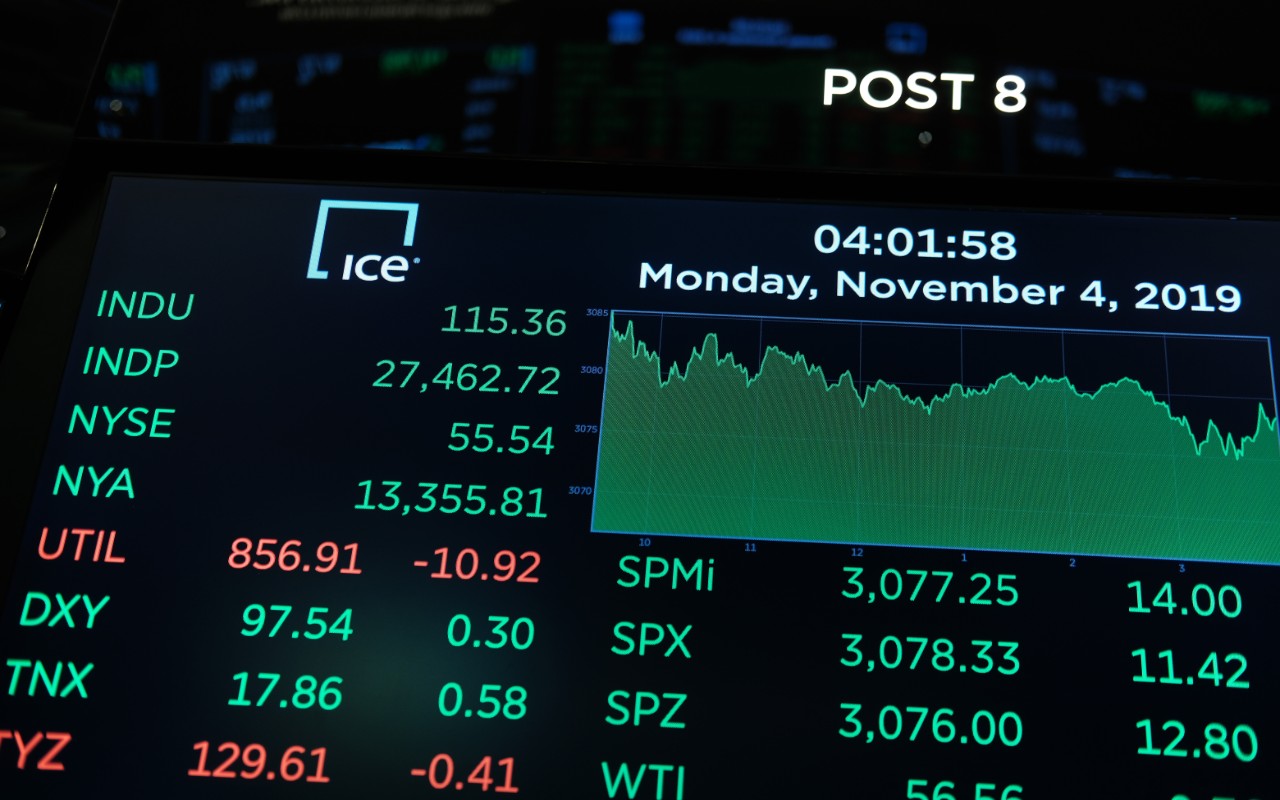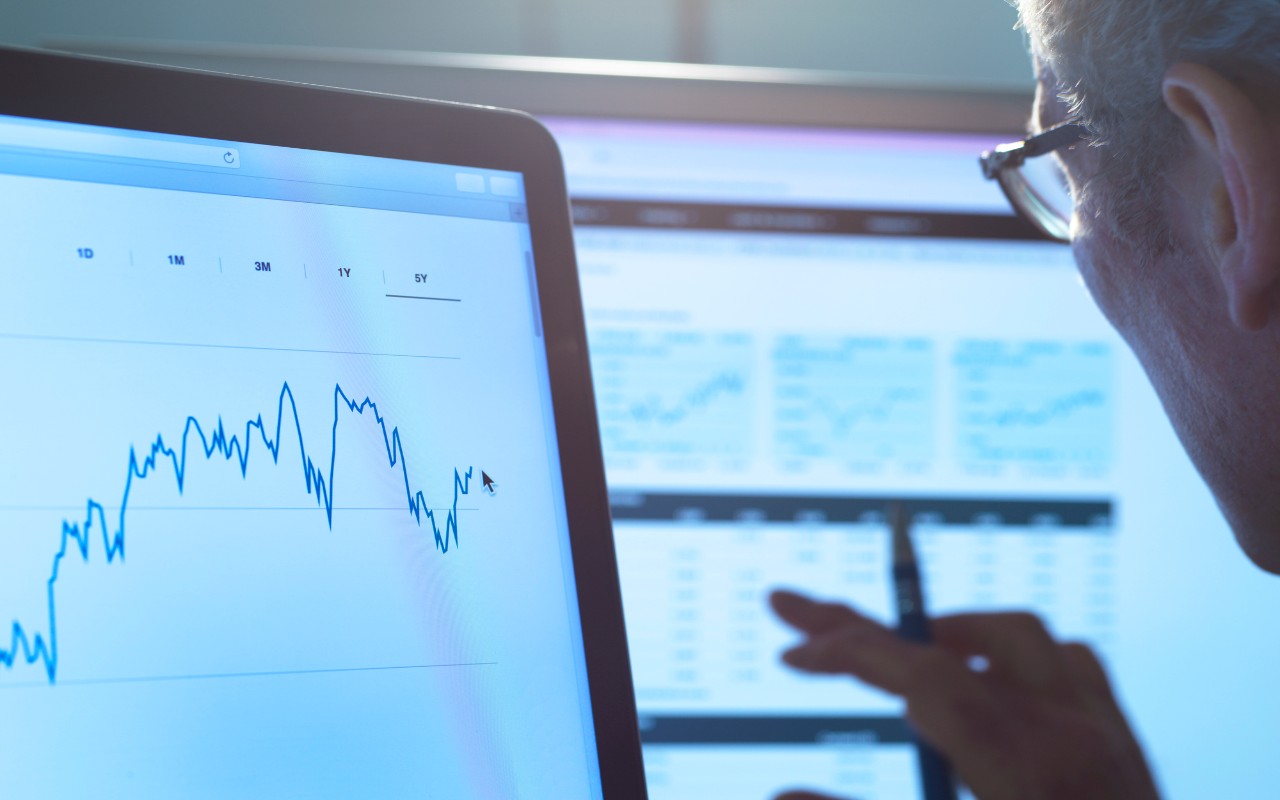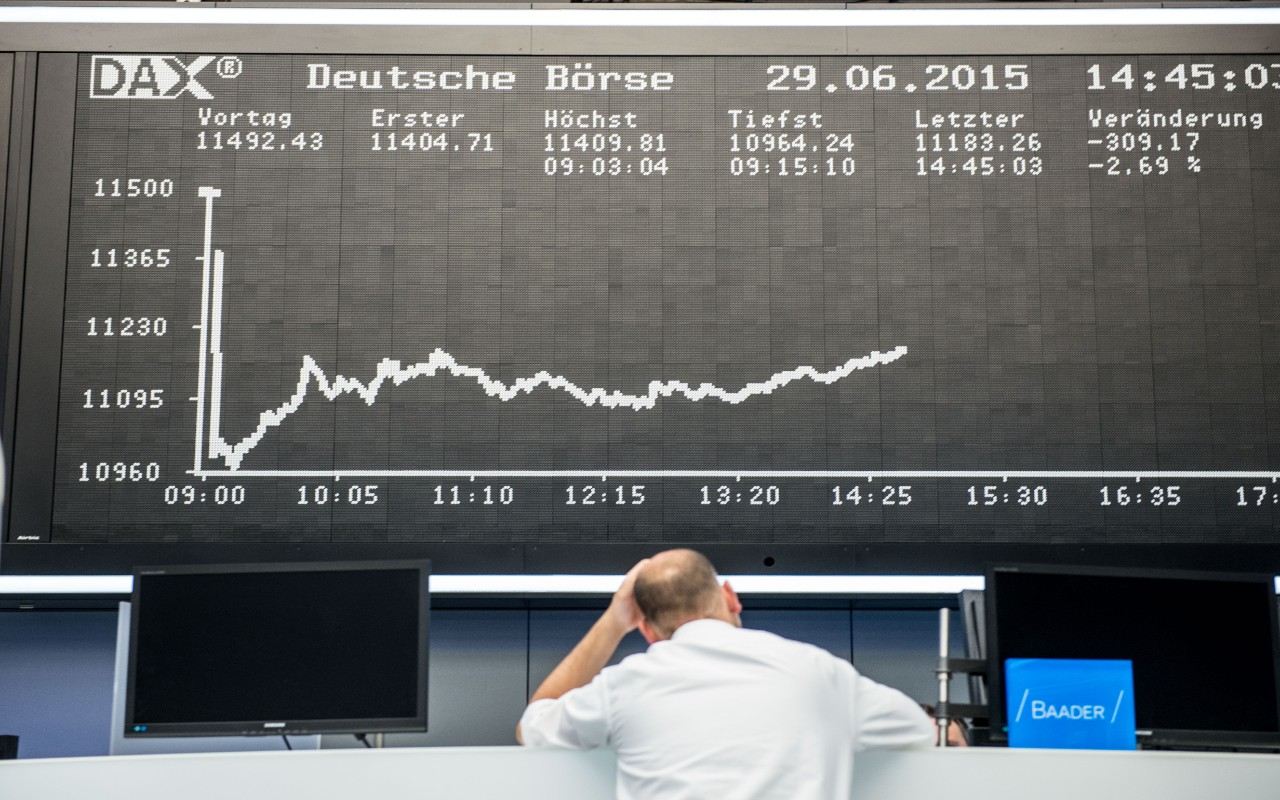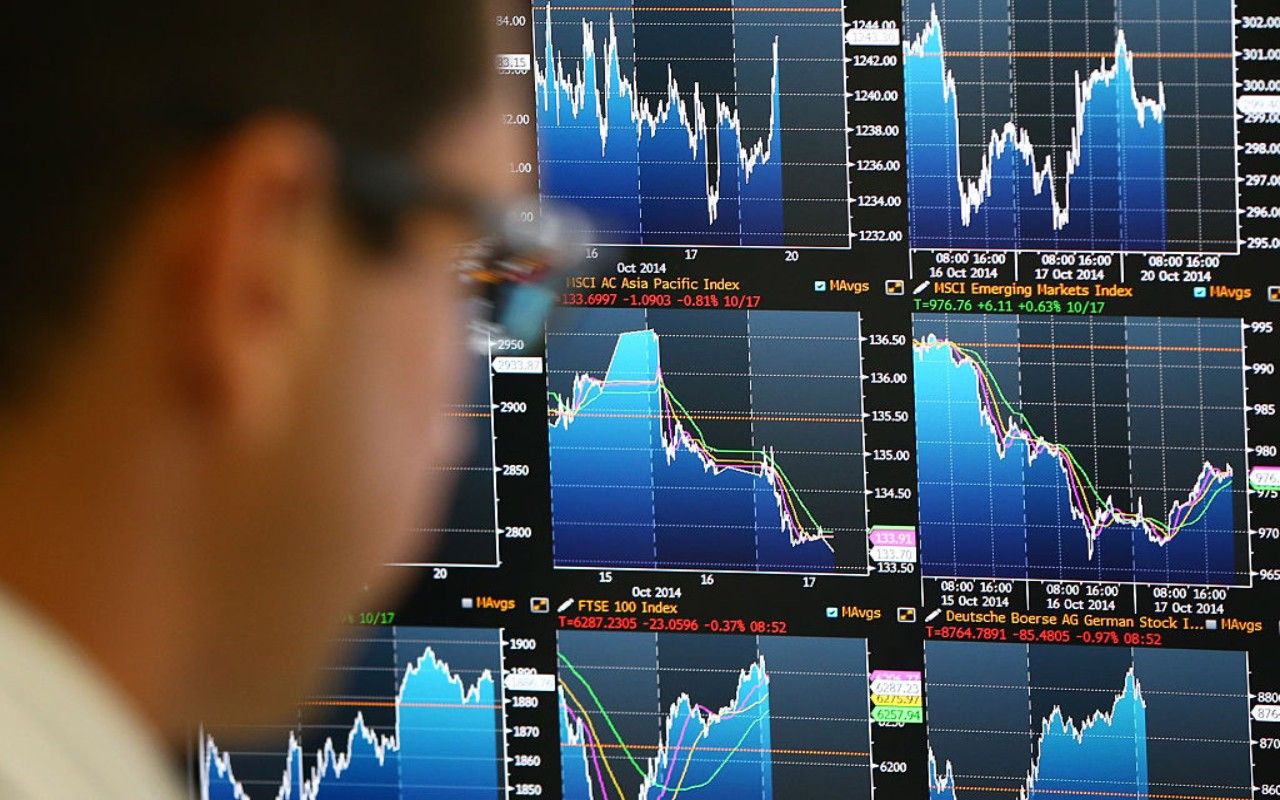8 Dirt-Cheap Index Mutual Funds for Thrifty Investors
Cost is one of the biggest edges for index mutual funds, which don't need to pay large money management teams to run the show.


Cost is one of the biggest edges for index mutual funds, which don't need to pay large money management teams to run the show. Annual expenses pull on your returns both in the form of actual fees paid and lost opportunity cost; every dollar you don't pay a fund provider is a dollar that's getting invested and compounding over time.
But index funds' actual performance isn't anything to sneeze at, either. Actively managed mutual funds routinely fail to beat the benchmark indices, and it has been that way for a long time. So if you can't beat the index, why not join it?
Selecting an index fund comes down to knowing the index you want to track, then finding an inexpensive product that does it. That straightforward nature makes index funds an ideal choice for most investors, but especially beginners looking to gain broad market exposure cheaply and efficiently. Today, we'll help start your search by examining index mutual funds that provide inexpensive access to popular stock and bond benchmarks.
You'll notice a theme: Fidelity Investments is large and in charge. Scott O'Reilly, head of index, sector, international and factor products at Fidelity, says the company can keep expenses low thanks to its status as a private firm with access to scale.
Technology also is "an essential part of the investment and operational processes," he says. "Investments in technology help drive efficiencies that allow us to manage index funds at a low cost."
With that in mind, here are eight of the cheapest index mutual funds tracking eight of the most common stock- and bond-market indices.
Data is as of May 3. Yields represent the trailing 12-month yield, which is a standard measure for equity funds.

Fidelity 500 Index Fund
- Index: S&P 500
- Assets under management: $213.4 billion
- Dividend yield: 2.3%
- Expenses: 0.015%, or $1.50 annually on a $10,000 investment
When you talk about "buying the market," that often means buying the S&P 500 Index. The index, which holds 500 mostly U.S.-based companies, is used as the premier gauge for the American large-cap equity market. More than $9.9 trillion is benchmarked to the index. And competition is steep among S&P 500 index mutual funds.
In terms of cost, the Fidelity 500 Index Fund (FXAIX, $98.21) is tops – or bottoms, depending on how you look at it. Its 0.015% expense ratio doesn't just make it the lowest-cost index mutual fund on this entire list – it makes it the cheapest way to buy the S&P 500, even when you include exchange-traded funds (ETFs).
It's not the cheapest way to buy large-cap stocks, however. The Fidelity Zero Large Cap Index Fund (FNILX), for instance, tracks the Fidelity U.S. Large Cap Index of the largest 500 U.S. companies by market value, and it charges zero fees for the privilege. That said, performance may vary from the S&P 500.
Back to the Fidelity 500 Index Fund: As its name implies, it invests in the S&P 500's components at the exact same weights as the index. Right now that means heaping helpings of large-cap tech stocks Microsoft (MSFT) and Apple (AAPL), and e-commerce titan Amazon.com (AMZN), among other mega-caps.

Fidelity NASDAQ Composite Index Fund
- Index: Nasdaq Composite
- Assets under management: $7.3 billion
- Dividend yield: 1.0%
- Expenses: 0.30%
The Nasdaq Composite Index includes all companies that trade on the Nasdaq stock exchange. That's currently around 2,700 names in total. The Fidelity NASDAQ Composite Index Fund (FNCMX, $108.21), which is required to invest at least 80% of its assets in the index's stocks, holds about 2,100 of them.
While that seems like a wide disparity, the FNCMX has done a great job of tracking the Nasdaq Composite over the past five years, never lagging its benchmark by more than its thin expense ratio. That's largely because the 600 names that Fidelity's fund excludes make up a marginal weight in the index.
What matters is the weight at the top, and that weight is extremely tilted toward technology and communications stocks, which make up almost 60% of assets. It's also top-heavy: FNCMX's top 10 holdings account for nearly 45% of the portfolio's assets. Eight of those 10 are tech and communications mega-caps such as Microsoft, Apple, Google parent Alphabet (GOOGL) and Facebook (FB).

Fidelity Small Cap Index Fund
- Index: Russell 2000
- Assets under management: $8.4 billion
- Dividend yield: 1.6%
- Expenses: 0.025%
Small-cap stocks – which theoretically have an easier path to outsize growth than their large-cap brethren – are a popular growth investment when the economy is strong and investors are confident.
That's hardly the case right now, of course. The Russell 2000 Index of small-cap stocks (boasting an average market capitalization of just $2.1 billion) has declined more than 24% in 2020 – roughly double the loss for the S&P 500.
Still, the Russell 2000 is the premier small-cap index, so those wishing to follow it for an eventual rebound could do a lot worse than the Fidelity Small Cap Index Fund (FSSNX, $15.96). While FSSNX is only required to invest at least 80% of its assets in the index's holdings, it boasts 1,984 – just a few shy of the full roster.
FSSNX has actually stayed a hair ahead of the index in performance, returning 0.2 percentage points more than the Russell 2000 over the previous five years as of March 31, 2020, and 0.1 percentage points over the previous three.
While small caps can provide greater return potential than larger companies, they also come with greater risk and volatility. FSSNX's five-year standard deviation, a measure of the fund's volatility, is 20. That's roughly five points higher (more volatile) than the Russell 3000, which includes the 3,000 largest U.S.-traded stocks. The good news? That's on par with the average risk of all funds in Morningstar's U.S. small-cap blend category. Meanwhile, FSSNX boasts above-average returns in that same time frame.

Vanguard Total World Stock Index Fund Admiral Shares
- Index: FTSE Global All-Cap Index
- Assets under management: $12.1 billion
- Dividend yield: 2.6%
- Expenses: 0.10%
Investors and fund managers often turn to the FTSE Global All Cap Index for global exposure. The index includes approximately 8,000 large-, mid- and small-cap stocks from developed and emerging markets around the world.
In essence, it – and the index funds that track it – represent the global stock market.
If that's what you're after, the Vanguard Total World Stock Index Fund Admiral Shares' (VTWAX, $24.00) "low fee and comprehensive portfolio should be tough to beat over the long run," Morningstar analyst Daniel Sotiroff says. VTWAX provides access to more than 7,500 of those stocks for a dirt-cheap 0.1% in annual fees. Moreover, the 10 largest holdings – which include many of the aforementioned U.S. large caps, as well as China's Alibaba (BABA) and Swiss foods giant Tencent (TCEHY) – make up just 11% of the overall portfolio. In other words, you get diverse exposure for low cost.
This "broad diversification mitigates the impact of the worst performers on the fund's overall performance," Sotiroff says. Being market cap-weighted also means VTWAX's "stock, sector, and country weights reflect the market's collective opinion of their respective values."
Like the index it tracks, 57% of VTWAX's portfolio is U.S. stocks. This is to be expected given the U.S. accounts for more than half the global stock market.

Fidelity International Index Fund
- Index: MSCI EAFE Index
- Assets under management: $23.5 billion
- Dividend yield: 3.6%
- Expenses: 0.035%
If you want to full get away from domestic stocks, you need to find indices that exclude the U.S. The MSCI EAFE Index is one such option.
The MSCI EAFE index focuses on large- and mid-cap stocks from 21 developed foreign markets, excluding Canada. And the lowest-cost index mutual fund tracking the MSCI EAFE Index is the Fidelity International Index Fund (FSPSX, $34.48).
Since Canada and emerging markets are left out, FSPSX "isn't the most diversified index-tracking foreign stock fund," Sotiroff says. "But the developed-market stocks that it does hold represent a majority of the foreign market." Approximately 85% of the free float-adjusted market capitalization of each country, to be more exact. (Free float-adjusted weighted indices exclude shares that cannot be openly traded, such as those held by company insiders or governments.)
Top stocks right now include Nestle, pharmaceutical company Roche Holdings (RHHBY) and Novartis (NVS).
FSPSX boasts a low 0.035% expense ratio and 3% turnover, meaning that every year, only about 3% of the fund's holdings change hands. That helps reduce costs associated with buying and selling of securities, and thus reduces drag on performance.

Fidelity Emerging Markets Index Fund
- Index: MSCI Emerging Markets Index
- Assets under management: $2.7 billion
- Dividend yield: 3.1%
- Expenses: 0.076%
Emerging markets finally get to be the star of the show in the MSCI Emerging Markets Index. EMs typically are countries that boast higher rates of economic growth, but also feature less developed financial and economic infrastructure than developed countries and more geopolitical risk.
Between Dec. 29, 2000, and March 31, 2020, the MSCI Emerging Markets Index returned 7.5% annually on average, versus 4.2% for the MSCI World Index. The emerging-markets index also had a higher risk-adjusted rate of return versus the world index over the same period.
But the ride can be bumpy. This year, for instance, emerging-market stocks are underperforming the S&P 500 by roughly 8 percentage points.
If you're willing to take more international risk, the Fidelity Emerging Markets Index Fund (FPADX, $8.87) is a low-cost way to do it. The fund's 0.076% expense ratio is well-below the category average of 1.1%.
Almost two-thirds of the portfolio is invested in emerging Asian markets including China, Taiwan and South Korea. FPADX's heavy concentration in China (over 37% of the portfolio) means its performance will be tied to the economic, political and social conditions of that country.

Fidelity U.S. Bond Index Fund
- Index: Bloomberg Barclays U.S. Aggregate Bond Index
- Assets under management: $49.7 billion
- SEC yield: 1.6%*
- Expenses: 0.025%
For a broad slice of the investment-grade U.S. taxable bond market, look for a fund that tracks the Bloomberg Barclays U.S. Aggregate Bond Index. This index includes U.S. dollar-denominated bonds with at least one year until maturity.
The Fidelity U.S. Bond Index Fund (FXNAX, $12.45), which tracks this "Agg" index, is among the lowest bond index funds in the game at just 2.5 basis points (a basis point is one one-hundredth of a percent).
"FXNAX is a great core investment-grade bond fund," says Morningstar analyst Neal Kosciulek. It's weighted by market value, "tilting the portfolio toward the largest, most liquid issues. This approach also harnesses the market's collective wisdom about the relative value of each security."
The fund is most heavily invested in U.S. Treasuries, which make up nearly 45% of the portfolio. FXNAX also holds considerable slugs of mortgage-baked securities (25.6%) and corporate bonds (22.4%).
"This is a conservative portfolio with little credit risk, which can make it a low hurdle for active managers," Kosciulek says. "That does not make this an unattractive proposition, as risk and return are highly correlated in the fixed-income market."
* SEC yield reflects the interest earned after deducting fund expenses for the most recent 30-day period and is a standard measure for bond and preferred-stock funds.

Fidelity International Bond Index Fund
- Index: Bloomberg Barclays Global Aggregate ex-USD Index Float Adjusted RIC Diversified Index (USD Hedged)
- Assets under management: $34.8 million
- SEC yield: 0.8%
- Expenses: 0.06%
The Bloomberg Barclays Global Aggregate ex-USD Index Float Adjusted RIC Diversified Index (USD Hedged) is quite the mouthful, but despite its difficult name, it's an important bond index tethered to international fixed income.
This "Global Agg" measures the global investment-grade fixed-rate debt market. It includes investment-grade government, agency, corporate and securitized fixed-income investments from developed and emerging markets. All of the investments are non-U.S. dollar-denominated and mature in more than one year.
The Fidelity International Bond Index Fund (FBIIX, $9.96) is the lowest-cost index mutual fund tracking this global bond index. At 0.06%, it's more expensive than several U.S. bond index mutual funds. And with only $28.5 million assets under management, it's considerably smaller. But then, FBIIX hasn't even been around for a year; the fund entered the markets in October 2019.
The Vanguard International Bond Index Fund Admiral Shares (VTABX) has been around much longer, since 2013, but it also charges more, at 0.11% in annual fees.
Profit and prosper with the best of Kiplinger's advice on investing, taxes, retirement, personal finance and much more. Delivered daily. Enter your email in the box and click Sign Me Up.

Coryanne Hicks is an investing and personal finance journalist specializing in women and millennial investors. Previously, she was a fully licensed financial professional at Fidelity Investments where she helped clients make more informed financial decisions every day. She has ghostwritten financial guidebooks for industry professionals and even a personal memoir. She is passionate about improving financial literacy and believes a little education can go a long way. You can connect with her on Twitter, Instagram or her website, CoryanneHicks.com.
-
 Is Your Emergency Fund Running Low? Here's How to Bulk It Up
Is Your Emergency Fund Running Low? Here's How to Bulk It UpIf you're struggling right now, you're not alone. Here's how you can identify financial issues, implement a budget and prioritize rebuilding your emergency fund.
-
 Guide to How All-Assets Planning Offers a Better Retirement
Guide to How All-Assets Planning Offers a Better RetirementAn "all-asset" strategy would integrate housing wealth and annuities with traditional investments to generate more income and liquid savings for retirees.
-
 Forget FIRE: Why ‘FILE’ Is the Smarter Move for Child-Free DINKs
Forget FIRE: Why ‘FILE’ Is the Smarter Move for Child-Free DINKsHow shifting from "Retiring Early" to "Living Early" allows child-free adults to enjoy their wealth while they’re still young enough to use it.
-
 Stocks Struggle for Gains to Start 2026: Stock Market Today
Stocks Struggle for Gains to Start 2026: Stock Market TodayIt's not quite the end of the world as we know it, but Warren Buffett is no longer the CEO of Berkshire Hathaway.
-
 Stocks End Volatile Year on a Down Note: Stock Market Today
Stocks End Volatile Year on a Down Note: Stock Market TodayAfter nearing bear-market territory in the spring, the main market indexes closed out the year with impressive gains.
-
 Stocks Extend Losing Streak After Fed Minutes: Stock Market Today
Stocks Extend Losing Streak After Fed Minutes: Stock Market TodayThe Santa Claus Rally is officially at risk after the S&P 500's third straight loss.
-
 Santa Claus Rally at Risk as Tech Stocks Slump: Stock Market Today
Santa Claus Rally at Risk as Tech Stocks Slump: Stock Market TodayThe Nasdaq Composite and Dow Jones Industrial Average led today's declines as investors took profits on high-flying tech stocks.
-
 Gold and Silver Shine as Stocks Chop: Stock Market Today
Gold and Silver Shine as Stocks Chop: Stock Market TodayStocks struggled in Friday's low-volume session, but the losses weren't enough to put the Santa Claus Rally at risk.
-
 The Santa Claus Rally Officially Begins: Stock Market Today
The Santa Claus Rally Officially Begins: Stock Market TodayThe Santa Claus Rally is officially on as of Wednesday's closing bell, and initial returns are positive.
-
 'Humbug!' Say Consumers, Despite Hot GDP: Stock Market Today
'Humbug!' Say Consumers, Despite Hot GDP: Stock Market Today"The stock market is not the economy," they say, but both things are up. Yet one survey says people are still feeling down in the middle of this complex season.
-
 Stocks Rise to the Spirit of the Season: Stock Market Today
Stocks Rise to the Spirit of the Season: Stock Market TodayInvestors, traders and speculators are beginning to like the looks of a potential year-end rally.
